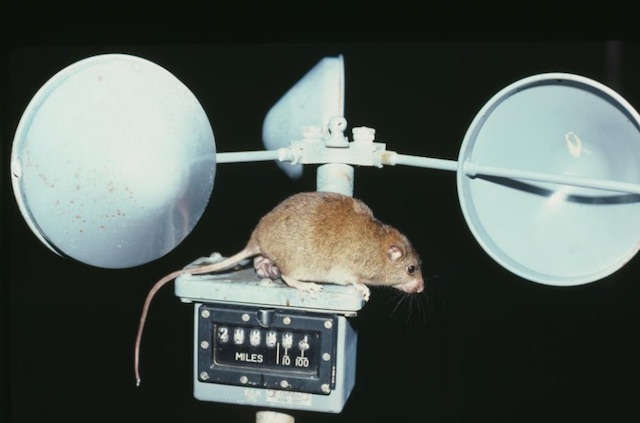
I hadn’t heard of the Bramble Cay melomys until yesterday, when the creature was designated the first presumed mammal to become extinct due to climate change.
Despite its fancy name, the Bramble Cay melomys looked like a relatively small brown rat. The long-whiskered rodent lived on the tiny island it’s named for, Bramble Cay, where they were first noted by humans in the 1840s.
They were last spotted on the island in 2009. An organized search in 2014 failed to locate any melomys.
What happened to these creatures?
According to the report on the assumed extinction of the creature, which was produced by The Queensland Government and the University of Queensland, Australia,
“The key factor responsible for the extirpation of this population was almost certainly ocean inundation of the low-lying cay, very likely on multiple occasions, during the last decade, causing dramatic habitat loss and perhaps also direct mortality of individuals.”
The island of Bramble Cay is low lying, and rising sea levels have wiped out much of the vegetation the Bramble Cay melomys depended on for sustenance.
“Significantly, this probably represents the first recorded mammalian extinction due to anthropogenic climate change,” stated the report.
The Bramble Cay melomys, also known as the mosaic-tailed rat, hasn’t been documented anywhere besides the island, which lies between Australia and Papua New Guinea. However, Professor Leung, who co-authored the study, speculated that it’s possible that the creature, or a close relation, could still exist on nearby Papua New Guinea.
While it may be easy to dismiss these little rat-like creatures, what about other creatures being threatened by climate change?
A 2015 study theorized that one in six of Earth’s species could face climate change-related extinction.
The Giant Panda, for instance, relies on bamboo, which is being threatened by rising temperatures.
Arctic-dwelling animals like the polar bear are in danger due to melting ice caps and rising sea levels.
So, what can we as humans do?
Plenty. We can vote for politicians who take climate change seriously. We can vow to reduce our own impact on the environment by using less oil and producing less trash. We can learn as much as we can about climate change and what work needs to be done to slow it down.
Might this little-known rodent make its mark through the death of its species by serving as a warning sign to humans?
Let’s hope so.
Author: Lynn Shattuck
Image: David Carter
Editors: Emily Bartran; Ashleigh Hitchcock






Read 0 comments and reply